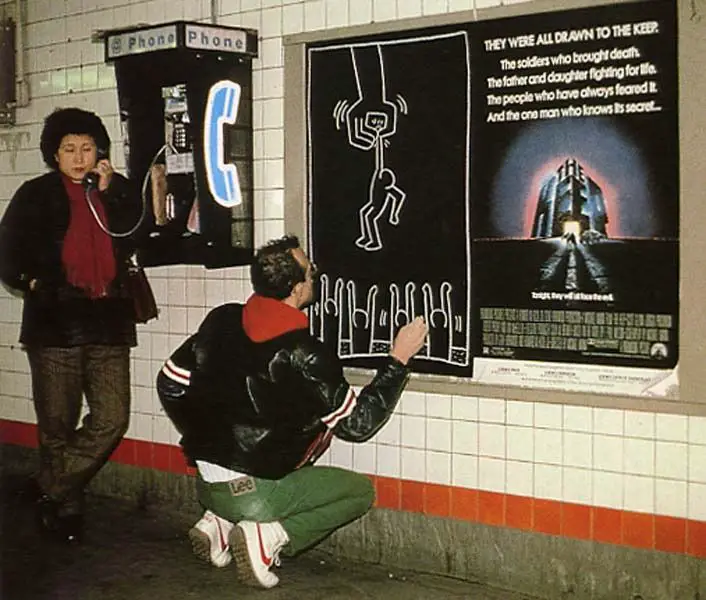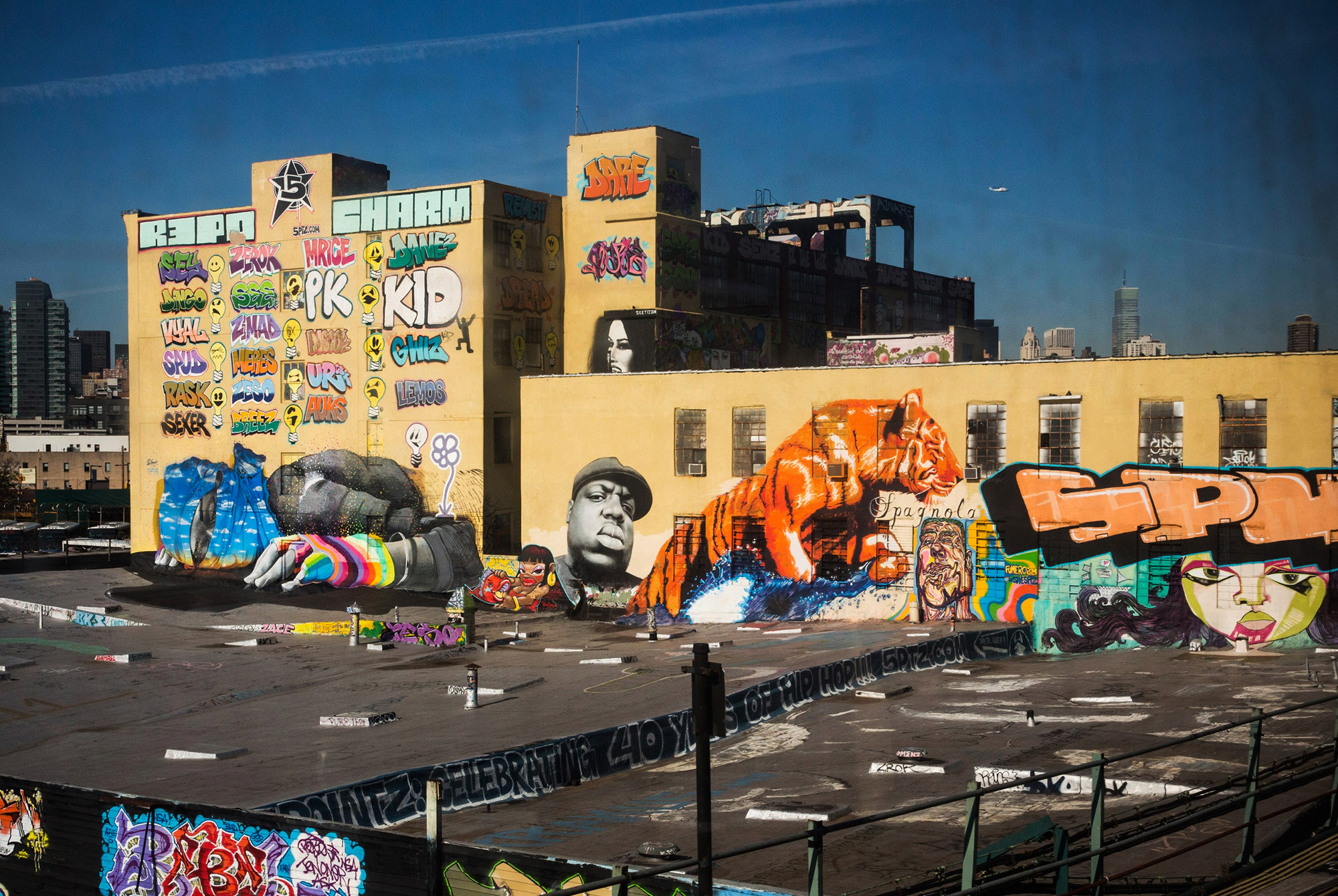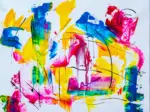When it comes time for you to lay down that first, illicit coat of paint on the underbelly of bridge, a wall in a populated alley or on the side of a stationary train, hopefully you have already asked yourself a number of questions.
First, you should know that you are breaking the law, and if you’re cool with that, then all of the other questions are going to be pretty straightforward—or at least a lot less important. You might have asked yourself what exactly you will draw, as in, will you tag the surface, draw a picture, use a stencil or leave provocative text? You might have even asked yourself, in a fit of sudden existential fervor, why you felt compelled to deface—or beautify, depending on who you’re asking—a piece of public property, and if such an act had roots in some sort of primal urge to make your name be known to the world, or if you’re putting can to building for no other reason than to kill your boredom.
If you have asked yourself any of these questions, then you are likely in the beginning stages of a burgeoning graffiti career. And if that’s the case, here are a few answers to some of those questions.
Graffiti Is Illegal—Should I Do It Anyway?
Look, I’d feel bad saying “yes” so explicitly, so let’s put it this way: You obviously clicked on this article, and I’m obviously writing this article, so there is an implicit suggestion that both of us have gotten over any moral hesitations that might impede our public works projects.
The debate over whether graffiti is public art or public nuisance is an ongoing one, and there is reason to believe that the proverbial man is softening his opinion on the matter, as cities across the world have, if nothing else, at least embraced wall art in certain designated zones. Their doing so implies not that every wall in the city should feature bright bubble names and anthropomorphic letters, but that even the stodgiest of policymakers can appreciate the beauty of the art form.
Until beauty and love win out, however, so long as marking the property of another remains illegal, you should know full well that what you’re doing can land you with some hefty fines, if not a more serious punishment.
How Does One Graffiti?
Obviously, there are hundreds of ways to inscribe a message or depict a scene on the flat surface of a building. But since you are just getting started, it pays to stick to the basics: You’re going to want spray paint and a paint marker, probably a black one.
When it comes to spray paint, the color you buy depends on the image you want to make, so that’s on you. In terms of brand, I recommend Molotow, Ironlak, Kolour and Flame, though I have a personal preference for Molotow.
For paint markers, the colors once again remain your choice, though I recommended a black one, only because you often use a marker to draw an outline that you then fill in, and black is highly visible and contrasts most colors well. Still, the color you buy depends on what you want to draw. When it comes to brands, my personal favorite is the Molotow One4All, as it consistently proves to be the easiest to use, most consistent in viscosity, longest-lasting and best accompaniment to Molotow paint, which is my favorite spray variety.
Of course, if you want to branch out from spray painting and tagging, then the tools of your trade will change as well, but for your first outing, there’s no need to sell the farm for the most luxurious products in the land; Molotow is a trusted name in the industry, and will definitely get the job done.
Why Does One Graffiti?
Ah, the teleology of graffiti—an underexplored subject, but one that drives most graffiti artists more than they know. Graffiti as an art form cannot be separated from its undercurrents of protest. Draw a smiley face on a canvas in your living room and it’s art (not good art); draw a smiley face on a train and it’s graffiti. One breaks the law and the other doesn’t, and that is the obvious, yet still subtle, difference. When you graffiti, you join a long legacy of soft anarchy, a tradition that traces its roots back to the origin of language itself, because so long as man has been saying, “I shall call him Esau,” another man has been scribbling “Fuck Esau” on the wall.
While rebellion is graffiti’s most seductive siren song, it is not its only one. Graffiti is inexpensive, which makes it more appealing to the average person—or beginner! You need no fancy tools, education or studio, just a can of paint and a few hours of time. The simplicity of the art form not only makes it more accessible, but it helps avoid the pretentiousness that lingers around the world of fine arts, which only reinforces the role of street art as the expression of the common man.

In a less noble vein, or perhaps, a vainer vein, graffiti is an incredibly effective tool of self-advertising. Write your name up on the wall and people will see your name—it’s as simple as that. The whole reason street artists began tagging trains is so that their self-promotion toured itself all across the city, raising intrigue as to the identity of the tagger all throughout town.
In fact, two of the most prominent artists of the twentieth century, Jean-Michel Basquiat and Keith Haring, rose to prominence in the eighties due to, in no small part, their graffiti. Basquiat left his mark across New York City with his “SAMO” tag, while Haring practically set up shop in the subway system.
Does Graffiti Do ANY Good???
Woah, chill! First, let’s look at this from the artistic perspective. Beauty uplifts the human soul, and—excepting what capitalism and private property have to say about the subject—graffiti brings art to the lives of ordinary people, going about their quotidian days. An amazing image adorning the side of a building or subway station that you pass during your commute can brighten your day, or at least break its monotony. Make no mistake—graffiti artists may be motivated, in part, by their egos or their maverick mindsets, but they are artists whose primary purpose it is to enrich the lives of others, and that checks out in my book.
Second, and you can really thank activists like Banksy for this one, graffiti can be political or even edifying. Instead of using their artwork as self-promotion, or, rather, using it in addition to self-promotion, graffiti artists have lately used their public visibility to communicate important moral messages to the public.
Subjects often revolve around bi-partisan issues, such as the promotion of universal peace, love and tolerance, but can at times get more granular, drawing into their targets specific political figures (*cough* Donald Trump *cough*) or ideologies, such as capitalism. In its capacity for criticizing the status quo, graffiti most closely resembles “traditional” art, but it betters its cousin in that its messages reach more people. A populist message that actually reaches the populace? That seems like a win-win to me.
Study Breaks occasionally receives monetary compensation for promoting the products or services of its partners.
















